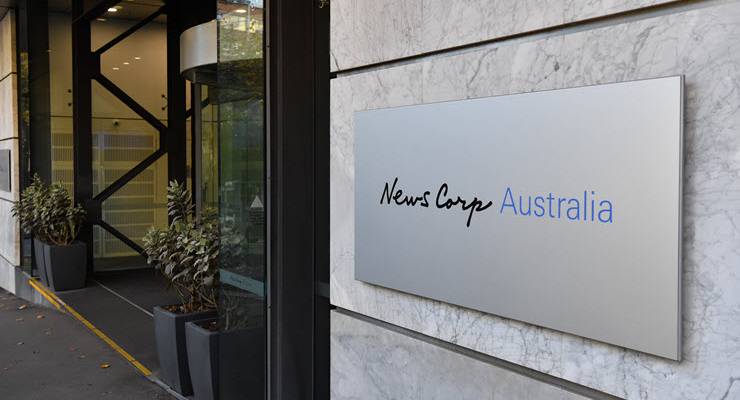
News Corp’s big problems didn’t start with the COVID-19 pandemic and lockdowns — they were just the final, devastating nail in the Murdoch empire’s heartland.
Back in 2016, the company made a costly investment to expand its print business, when it should have been cutting. News Corp made the $36 million purchase of regional daily and weekly newspapers from the former APN News and Media, the old employer of current News Corp Australia executive chairman Michael Miller.
Around the same time, News bought control of Sky News. If it had continued to share control with Nine and Seven, it would have had others to share the slide on revenue and losses.
But now, because it was the dominant Australian newspaper owner, it is also suffering the largest loss in revenues. It’s the other side of the media influence coin which is now landing to the disadvantage of the Murdochs.
Controlling more than 70% of daily newspaper sales might make you a loud and obnoxious voice, and in good times, the recipient of a larger share of ad revenues, but in tough times, the influence and ad revenues plunge.
Under then-CEO Kim Williams in 2012, News Corp made sweeping and serious cuts to its papers, reporting structures and centralising services — loudly decried by editors and former editors.
Since then News Corp quarterly briefings have constantly referred to cost cuts in Australia. Now it’s more serious — the slide in ad revenues and sales has been compounded by the dramatic impact of the COVID-19 crisis and a 40% plus slump in ad revenues in April alone.
The March quarterly report, well before the full impact of COVID-19 and the shutdowns, revealed how the revenue problems for News Corp Australia were deepening.
Newspaper sales and subscription revenues weren’t the big concern — they continued to fall for print — but this was a problem covered up by price increases in the three months to March 31. This means lower sales this quarter and next as under-pressure consumers cut their personal costs.
Newspaper subscriptions for News’ Australian papers continue to rise, hitting 613,000 in the March quarter, up 25%.
The News Corp March quarter report released earlier this month reveals the damage being done to the company’s non-sales newspaper revenues.
Revenues in News Corp Australia (the news and information services side) were US$243 million for the three months ended March 31. That was down US$41 million, or 14%, compared to revenues of US$284 million in the same quarter of 2018-19.
That was mostly due to a US$31 million fall in ad revenues, or which US$21 million fell in print advertising and US$10 million was due to thenegative impact of foreign currency fluctuations (Australian dollar values versus the value of the US dollar). That’s a loss of valuable ad revenues of more than US$1.5 million a week over the quarter.
Circulation and subscription revenues were down US$6 million due to the US$7 million negative impact of foreign currency fluctuations, “as cover price increases and digital subscriber growth more than offset print volume declines”. (It’s a lag, the fall in circulation revenues will outweigh the gains from higher cover prices from now on until the next price rise.)
Ad revenues fell at a rate of more than US$9 million (around A$14 million) a month, a substantial fall by any measure.
So what does this tell us? That the problems at News on the costs side cannot recover or make up for the revenue losses.
News has already had two major rounds of job cuts that left several hundred journalists and other staff without jobs up to 2019. The cost cuts always lag the falling revenues, which will never be made up, especially at the present time.
The current cuts is acknowledgement that restructuring should have been carried out eight years ago. It wouldn’t have protected the company against the impact of COVID-19 and the lockdowns, but News would have been on a sounder footing from 2013 onwards.
Equally, News shouldn’t have made the APN purchase, bought control of Sky News or grabbed control of Foxtel by buying 15% extra in a deal with Telstra.
That moved control of Fox Sports to Foxtel from News at a time when Foxtel was under growing pressure from streaming video services. News had to support Foxtel with valuable loans ($700 million) in 2019.
To the hundreds of jobs going at News Corp Australia in Thursday’s news, add the 500 or so which have already gone at Foxtel so far in 2020. The Foxtel move has already cost News more than US$1.3 billion in impairment write downs because Foxtel was overvalued since 2018.
But overall, executives at News didn’t recognise the threat from the iPhone, social media and changing demographics. They should have done revenue sharing deals with the devils at Facebook and Google and not treated them with contempt and disdain.
News has a roughly 13% stake in HT&E, the owners of two radio networks and an outdoor business (it’s the rump of the old APN News and Media).
News has had that stake “available” for sale for a couple of years and no bites, even though the market value of the holding has sunk from A$115 million to around A$44 million.
There are no bargains left in legacy media, even at what seem to be knockdown prices, only black holes.








Nice obituary of a deservedly dying, hopefully soon to be stone dead, conglomerate.
What, so Abbott’s and Turnbull’s attempt to improve the profitability of Foxtel by knackering the NBN has turned out to be all for nothing? Bloody brilliant!
You should remember that Rupert Murdoch, along with other business high flyers, Fred Hilmer I’m looking at you, thought that the internet wouldn’t be a threat, and carry on being a dinosaur.
Rupert WAS a brilliant businessman, but always a reactionary, and way past his use by date. His business will be overtaken by more nimble and clever competitors.
May your demise be ignominious, you narcissist.